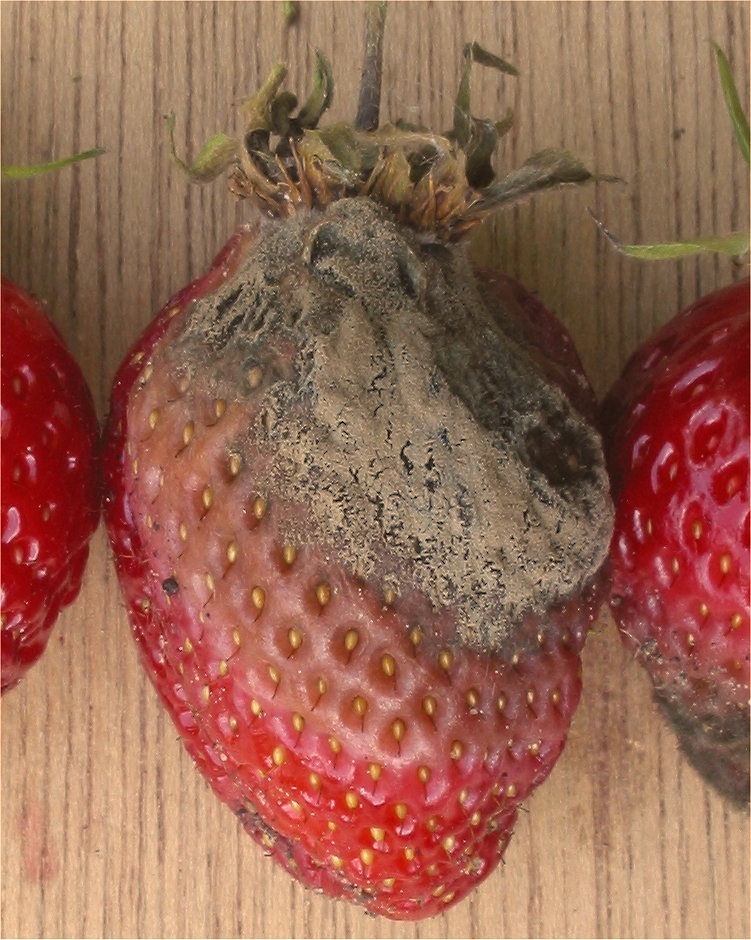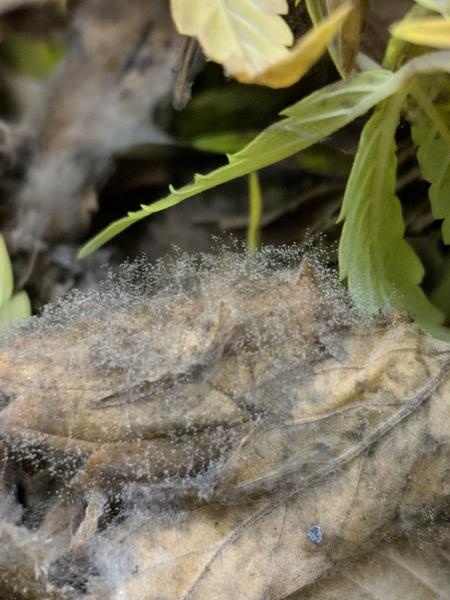Whether it is grown indoors or outdoors, Cannabis sativa can be noticeably sensitive to environmental factors, including humidity, sunlight, soil composition, and fungi. One notable cannabis killer is a parasitic fungus known as Botrytis, or ‘gray mold.’

Far from unique to cannabis, Botrytis can affect most perennial and annual plants, especially those with succulent petals such as geraniums and peonies. Our food is equally susceptible to gray mold, especially when it’s harvested and stored in cool areas. A few examples of susceptible foods include blackberries, blueberries, and strawberries.
A recent study conducted in Oregon in 2019 found three species of Botrytis across 90% of three industrial hemp fields with at least one flower per infected plant showing signs including necrosis in plant tissues and die-back. [1]
“The tops of the inflorescences were often the most severely affected with the infection sometimes moving down into the petiole or stem,” the study pointed out.
To determine whether Botrytis infections are capable of appearing in other hemp crops, isolates were extracted from each of the Botrytis species—B. cinerea, B. pseudocinerea, and Botrytis sp. (novel)—for use in pathogenicity trials, which resulted in a similar effect mirroring what was found in the field.
In its conclusion, the study argued that pathogenicity trial results suggest Botrytis will be a common issue for hemp crops in Oregon and other growing regions. [1]
How can Botrytis be avoided?
Indoor growing operations will be able to exert greater control over growing conditions to ward off the risk of infection. For outdoor growers, the picture is more complicated. In general, Botrytis thrives in cool, damp environments. Cool air may increase relative humidity and allow moisture to accumulate on plants (e.g., dew). Other factors include sudden changes in temperature and heavy rainfall.
Insect damage has been linked to Botrytis in plants as a possible source of infection. [2] Thus, it is important to keep a watchful eye for any pests appearing in one’s hemp crop.
If an area is infected with gray mold, the best solution is to remove the infected area carefully and precisely in an effort to stop the spread of the fungus. C. sativa is particularly vulnerable in the flowering stage. Ideally, infection is avoided by keeping equipment sterile, ensuring air circulation, and avoiding stagnant moisture. If needed, an organic fungicide could be implemented; Bacillus subtilis is one possibility. [3]
Fighting Botrytis requires a mix of proactive measures and a keen awareness of environmental conditions. As research continues on Botrytis and its relationship with C. sativa, perhaps better solutions will be found.
References:
- Garfinkle AR Three Botrytis species found causing gray mold on industrial hemp (Cannabis sativa) in Oregon. Plant Disease. 2020;104(7):2026. https://doi.org/10.1094/PDIS-01-20-0055-PDN. [Impact Factor: 3.02; Times Cited: n/a ]
- Dewey FM, Grant-Downton R. Chapter 2 Botrytis: biology, detection and quantification. In: Fillinger S, Elad Y, eds. Botrytis – the Fungus, the Pathogen and its Management in Agricultural Systems.Springer; 2016. doi:10.1007/978-3-319-23371-0. [Times Cited (book): 49]
- Nicot PC, et al. Chapter 9 Biological control and biopesticide suppression of botrytis -incited diseases. In: Fillinger S, Elad Y, eds. Botrytis – the Fungus, the Pathogen and its Management in Agricultural Systems.Springer; 2016. doi:10.1007/978-3-319-23371-0. [Times Cited (book): 49]
Photos courtesy of Lindsey Thiessen at the NC State University Entomology & Plant Pathology, Rasbak / CC BY-SA (http://creativecommons.org/licenses/by-sa/3.0/)








